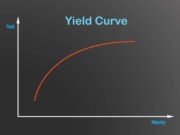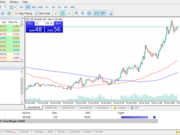Definition
In mathematics, the geometric mean is a mean or average, which indicates the central tendency or typical value of a set of numbers by using the product of their values. The geometric mean is defined as the th root of the product of numbers, i.e., for a set of numbers, the geometric mean is defined as.
Geometric Mean
What is the ‘Geometric Mean’
The geometric mean is the average of a set of products, the calculation of which is commonly used to determine the performance results of an investment or portfolio. It is technically defined as “the ‘n’th root product of ‘n’ numbers.” The geometric mean must be used when working with percentages, which are derived from values, while the standard arithmetic mean works with the values themselves.
Explaining ‘Geometric Mean’
The main benefit to using the geometric mean is the actual amounts invested do not need to be known; the calculation focuses entirely on the return figures themselves and presents an “apples-to-apples” comparison when looking at two investment options over more than one time period.
Geometric Mean
If you have $10,000 and get paid 10% interest on that $10,000 every year for 25 years, the amount of interest is $1,000 every year for 25 years, or $25,000. However, this does not take the interest into consideration. That is, the calculation assumes you only get paid interest on the original $10,000, not the $1,000 added to it every year. If the investor gets paid interest on the interest, it is referred to as compounding interest, which is calculated using the geometric mean. Using the geometric mean allows analysts to calculate the return on an investment that gets paid interest on interest. This is one reason portfolio managers advise clients to reinvest dividends and earnings.
Geometric Mean Calculation
To calculate compounding interest using the geometric mean, the investor needs to first calculate the interest in year one, which is $10,000 multiplied by 10%, or $1,000. In year two, the new principal amount is $11,000, and 10% of $11,000 is $1,100. The new principal amount is now $11,000 plus $1,100, or $12,100. In year three, the new principal amount is $12,100, and 10% of $12,100 is $1,210. At the end of 25 years, the $10,000 turns into $108,347.06, which is $98,347.05 more than the original investment. The shortcut is to multiply the current principal by one plus the interest rate, and then raise the factor to the number of years compounded. The calculation is $10,000 × (1+0.1) 25 = $108,347.06.
Further Reading
- Uncertain linguistic hybrid geometric mean operator and its application to group decision making under uncertain linguistic environment – www.worldscientific.com [PDF]
- Geometric mean reversion: formulas for the equilibrium density and analytic moment matching – papers.ssrn.com [PDF]
- Geometric or arithmetic mean: A reconsideration – www.tandfonline.com [PDF]
- A monte carlo investigation of characteristics of optimal geometric mean portfolios – www.jstor.org [PDF]
- Mean-variance approximations to the geometric mean – www.worldscientific.com [PDF]
- A requiem for the use of the geometric mean in evaluating portfolio performance – www.tandfonline.com [PDF]
- The “fallacy” of maximizing the geometric mean in long sequences of investing or gambling – www.pnas.org [PDF]
- Estimating cost of capital in firm valuations with arithmetic or geometric mean–or better use the Cooper estimator? – www.tandfonline.com [PDF]


































